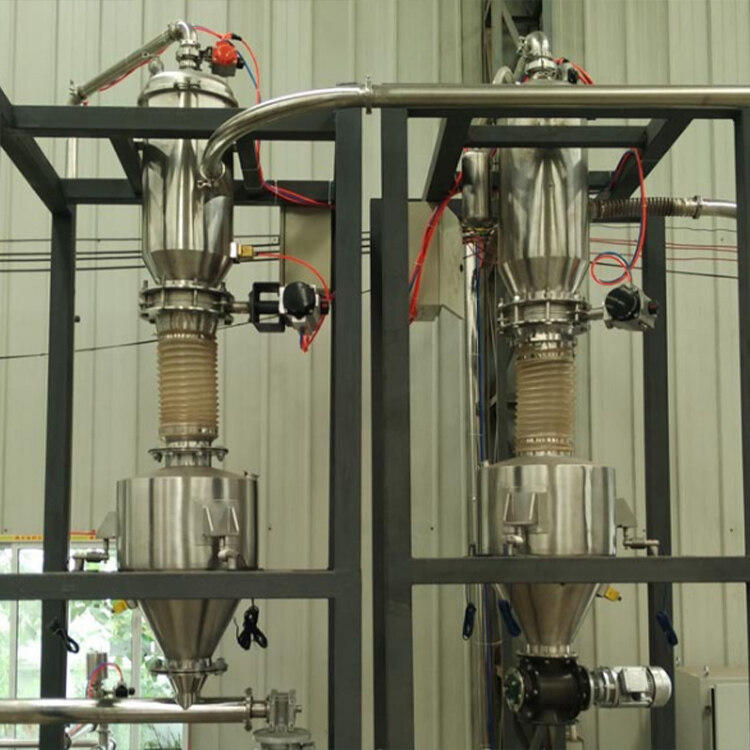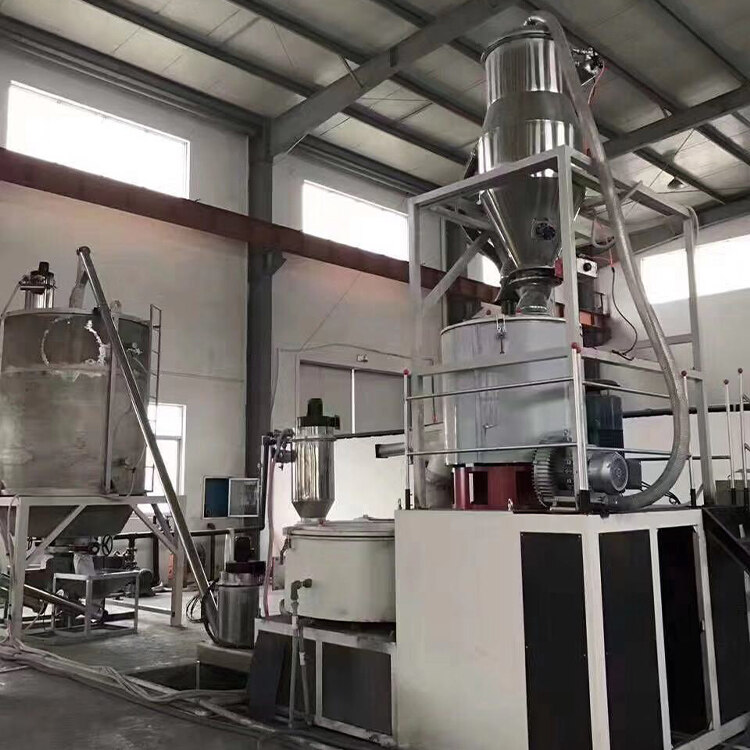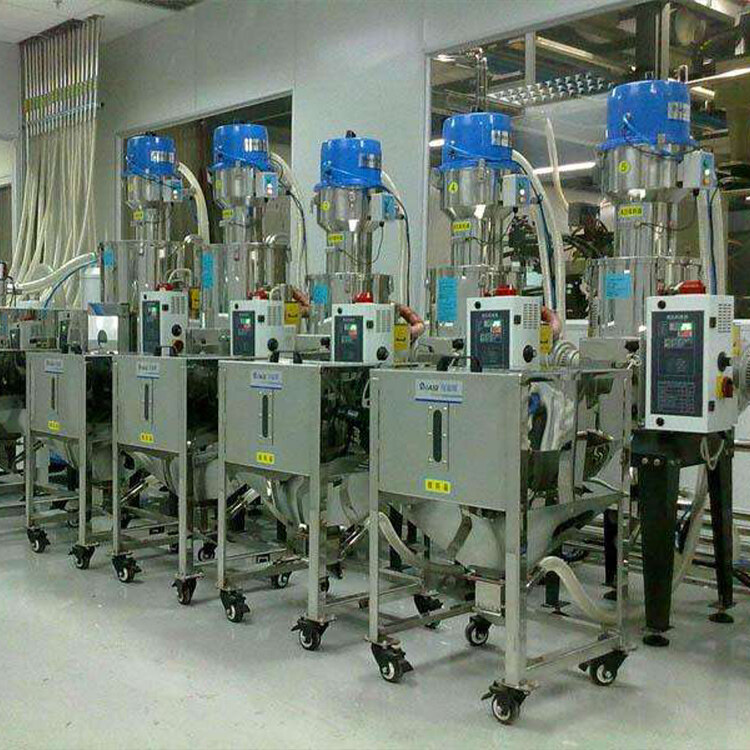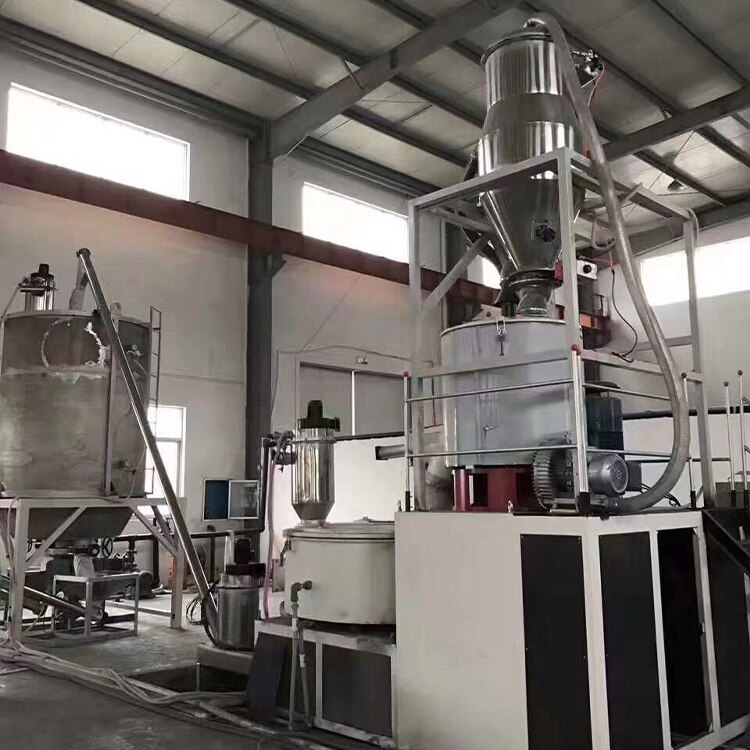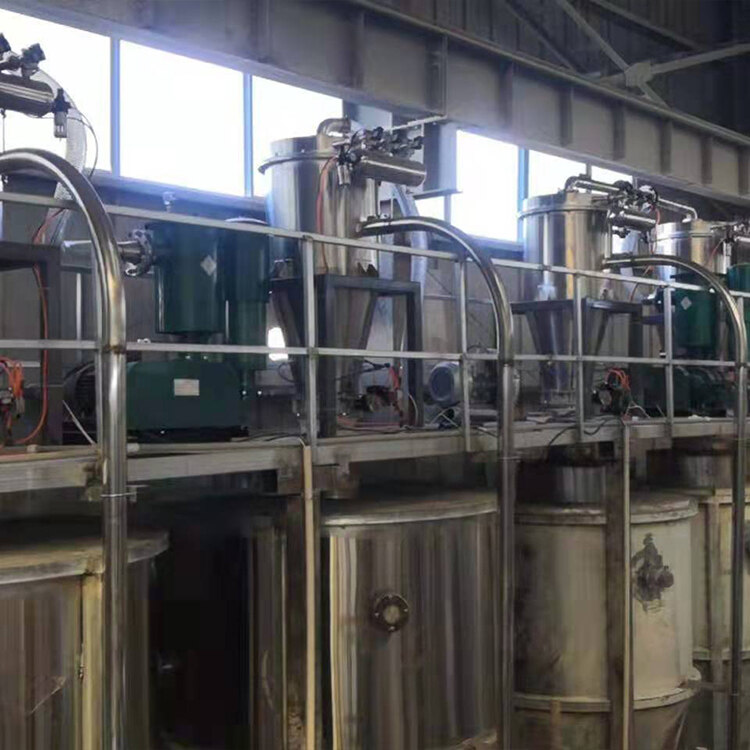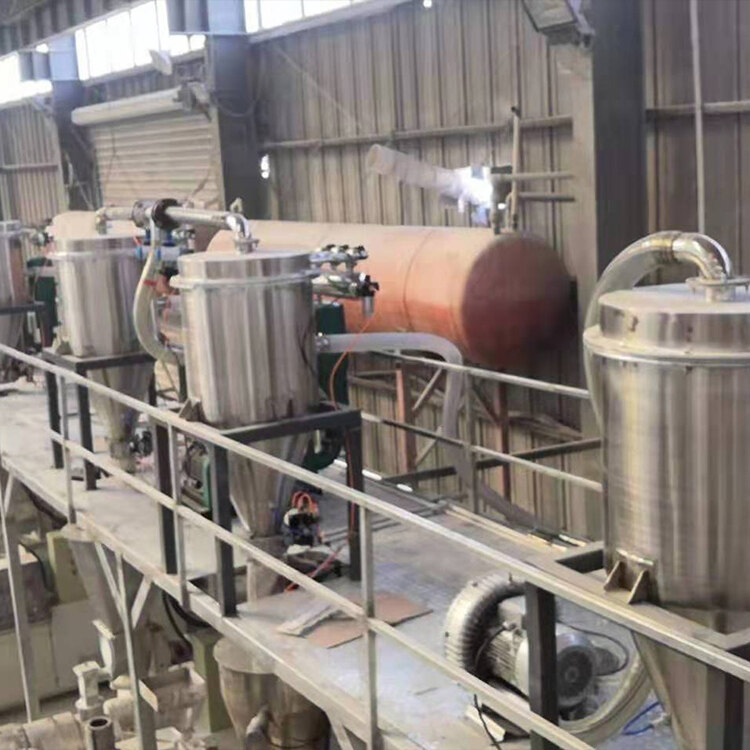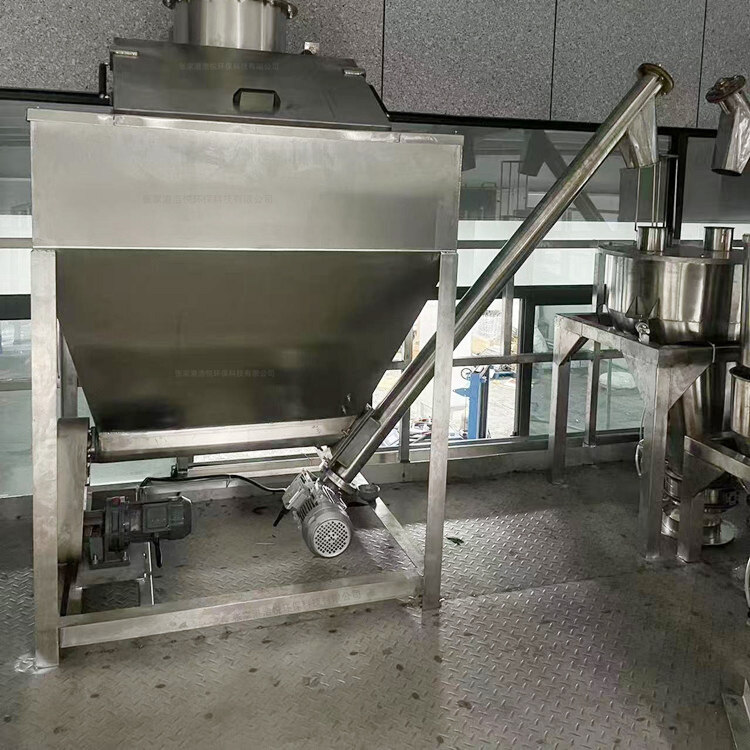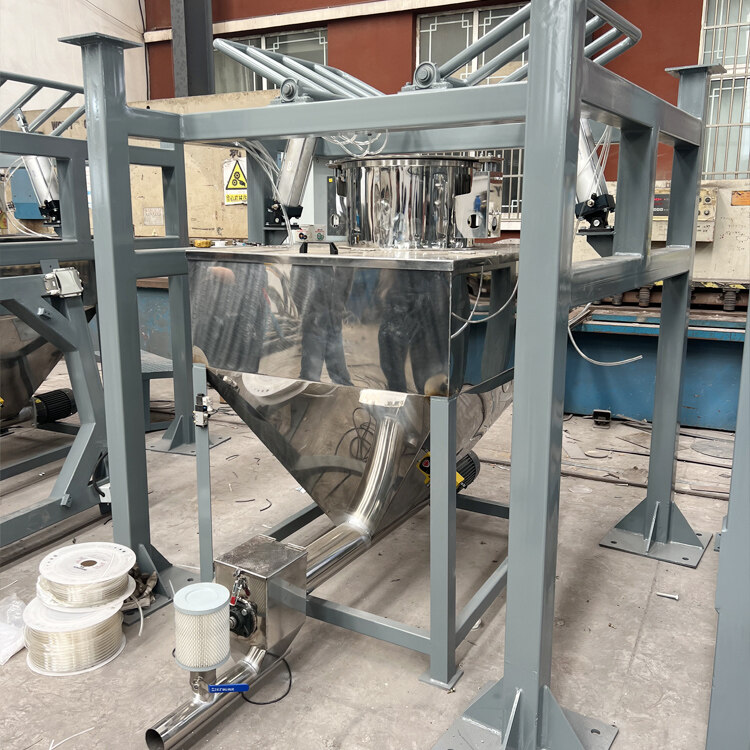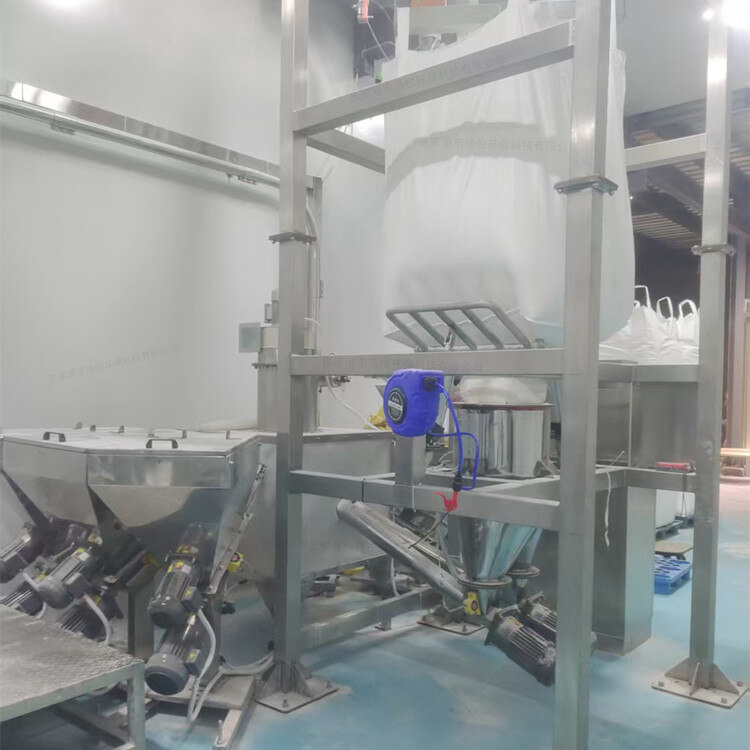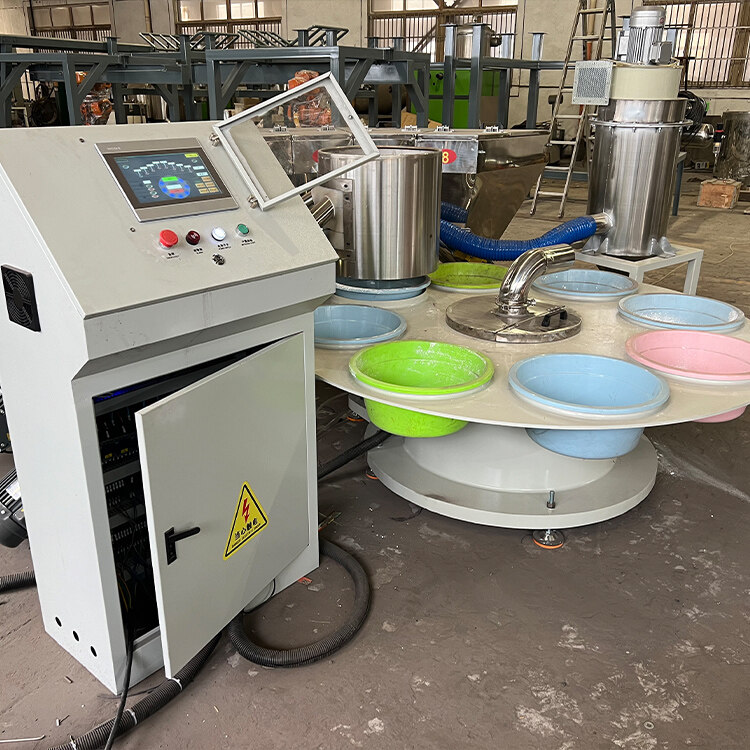- Introduction to automatic batching machine and fully automatic batching machine equipment
- The powder metering system tells you about the introduction of the mixing and drying machine
- 1000kg vacuum feeding machine
- Fully automatic small material batching system
- Research on Innovation of Automatic Weighing Machine Technology
- Design and operation of automatic batching system using PLC, industrial computer and frequency converter
Centralized feeding system
- Category:Centralized feeding system
- Hits:198次
- Release Date:2025-06-23
- Share:
- Inquiry
- Details
The centralized feeding system is a modern solution for material transportation and management, which integrates dispersed material storage, measurement, and transportation processes to achieve automated centralized supply of materials for multiple workshops and equipment. This system is widely used in industries such as plastic processing, food, chemical, and pharmaceutical, effectively solving problems such as low efficiency, easy pollution, and complex management of traditional feeding modes. The following provides a detailed introduction to the system's functions, core components, working principles, application scenarios, and development trends.
1、 Core functions and technological advantages of the system
Automated and efficient feeding
The centralized feeding system can provide materials for multiple devices (such as injection molding machines, extruders, blow molding machines) simultaneously, and transport materials directly from the central storage bin to the production equipment through pipelines, replacing manual handling and dispersed feeding. The system adopts intelligent control and automatically starts and stops feeding according to equipment requirements, reducing the feeding response time to a few minutes and increasing production efficiency by 30% -50%. For example, in plastic processing enterprises, stable feeding can be provided to 20-50 injection molding machines simultaneously to meet the demand for continuous production.
Accurate measurement and quality assurance
The system is equipped with high-precision measuring devices (such as weight loss scales and volumetric meters) to dynamically weigh or control the volume of materials, with a measuring accuracy of ± 0.1% - ± 1%. By presetting the formula through the PLC control system, the material conveying volume is automatically adjusted to ensure consistent raw material ratios for each batch of products, avoiding product quality fluctuations caused by manual errors. In addition, fully enclosed conveying pipelines prevent materials from coming into contact with the outside world, preventing dust and moisture pollution, especially suitable for industries such as food and medicine that require high cleanliness.
Intelligent centralized control
With the central control room as the core, it integrates PLC, industrial touch screen, and dedicated management software to achieve real-time monitoring and remote operation of the entire system. Operators can view data such as material levels in each storage bin, conveying pipeline pressure, and equipment operating status through the interface; When there is a low material level, pipeline blockage, or equipment failure, the system automatically alarms and generates a solution. Some high-end systems support integration with factory MES and ERP systems to achieve unified management and analysis of production data and optimize production scheduling.
Energy saving, environmental protection and safety design
The system adopts negative pressure or positive pressure pneumatic conveying technology, with pipeline sealing performance reaching IP65 level and dust leakage less than 1mg/m ³, effectively improving the workshop environment. The conveying power equipment (such as Roots blowers and vacuum pumps) is equipped with a variable frequency control system, which adjusts the power according to actual needs, saving 20% -30% energy compared to traditional feeding modes. In addition, for flammable and explosive materials, the system can be equipped with explosion-proof motors, anti-static pipelines, and grounding devices to ensure production safety.
2、 System composition and working principle
1. Core equipment unit
Central storage bin
Made of stainless steel or carbon steel material, the volume is customized according to the needs of the enterprise (usually 5-100 cubic meters), and the warehouse body is designed with a conical bottom, equipped with material level monitoring devices (radar type, heavy hammer type) to provide real-time feedback on material inventory. Install a pulse bag filter at the top with a filtration efficiency of 99.9% to prevent dust from overflowing; For materials that are prone to clumping, install arch breaking devices such as vibrators and air cannons.
conveying system
Pneumatic conveying: divided into negative pressure conveying and positive pressure conveying. Negative pressure conveying utilizes a vacuum pump to generate a suction force of -20kPa to -60kPa, which sucks materials from the storage bin into the pipeline. It is suitable for short distance (<100 meters) and multi-point feeding scenarios; Positive pressure conveying generates a pressure of 0.1-0.3 MPa through a Roots blower, pushing materials to distant equipment (up to 300 meters), suitable for high flow and long-distance conveying.
Auxiliary conveying: For short distances or special materials, screw conveyors, vibrating conveyors, etc. can be used. For example, in the food industry, stainless steel screw conveyors are used to transport flour to avoid material residue and pollution.
Measurement and Distribution Unit
Measuring device: The weight loss measuring scale controls the discharge amount by real-time monitoring of changes in the weight of the silo, with high accuracy; Volumetric measuring instruments (such as rotary valves and screw pumps) are transported by fixed volume and have lower costs.
Distributor: Using pneumatic distribution valves or electric rotary distributors, materials are accurately distributed to designated equipment according to instructions, with a switching response time of less than 5 seconds.
control system
Hardware: Composed of PLC controller, sensor network (pressure sensor, flow sensor, material level sensor), and touch screen, it realizes data acquisition and logic control.
Software: Specialized management software supports functions such as recipe management, equipment scheduling, and fault diagnosis, with visual interfaces and data report generation capabilities.
2. Workflow
Material storage: Materials enter the central storage bin through the ton bag unloading station or manual feeding port, and the dust collector synchronously starts to adsorb dust.
Automatic feeding: The PLC system starts the fan or conveying equipment according to the production equipment requirements and the material level of the storage bin, and the material is transported to the distributor through the pipeline.
Accurate measurement: The measuring device weighs or measures the volume of materials according to the preset formula to ensure accurate conveying volume.
Directional allocation: The distributor distributes materials to the hopper of the designated equipment, and the level sensor in the hopper provides feedback signals to control the start and stop of feeding.
Intelligent monitoring: The system monitors data from all aspects throughout the process, automatically alarms and shuts down in case of abnormalities, and records fault information for easy troubleshooting.
3、 Typical application scenarios
Plastic processing industry: Centralized supply of plastic pellets for injection molding machines and extruders, combined with drying and color matching systems, to achieve full process automation of raw material pretreatment, transportation, and molding.
Food industry: Dust free transportation and measurement of raw materials such as flour, sugar powder, and milk powder, using stainless steel materials that comply with GMP standards and CIP cleaning function to ensure food safety.
Chemical industry: transporting chemical raw materials and additives, explosion-proof design meets the requirements of hazardous chemical production; Ensure accurate chemical reaction ratios through precise measurement.
Pharmaceutical industry: In the production of pharmaceutical preparations, high-precision weighing and clean transportation of raw materials are achieved to avoid cross contamination and meet the quality management standards for drug production.
4、 Technological development trends
Intelligence and Digitalization: Introducing AI algorithms to optimize feeding paths and scheduling strategies, and simulating system operation through digital twin technology; Utilize 5G network to achieve remote operation and maintenance of devices and fault prediction.
Modularization and Flexibility: Adopting standardized module design, supporting quick disassembly and functional expansion, adapting to the needs of multiple varieties and small batch production; For example, by adding a measuring module, multiple materials can be mixed and fed.
Green and low-carbon: Developing efficient and energy-saving conveying equipment, exploring new energy driven solutions; Optimize pipeline layout to reduce transportation energy consumption and carbon emissions.
The centralized feeding system, with its efficient, precise, and intelligent characteristics, has become a key equipment for upgrading modern manufacturing industry. In the future, with the deepening application of Industry 4.0 technology, this system will play a more important role in promoting digital transformation of enterprises and achieving green and intelligent manufacturing.


